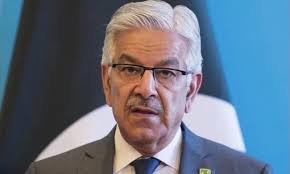This is the first installment of a three-part series highlighting the everyday challenges of life in Manipur’s hill districts. In this opening piece, we examine the staggering cost of living in Southern hill districts like Churachandpur,Chandel, and Tengnoupal and the structural issues that make basic necessities unaffordable. The second part will delve into the state of healthcare in the hills, where lack of access and infrastructure continue to endanger lives. EDITOR
BY PC Bureau
In Guwahati, Dimapur, or Aizawl, a 50 kg bag of cement, regardless of brand, costs between ₹350 and ₹400. However, in Churachandpur, Manipur, just 70 km from the state capital Imphal, the price skyrockets to ₹700 per bag. “This is the harsh reality we live with,” says Dr. C. Thangsing, Vice President of the Kuki People’s Alliance. “I’m building a bed-and-breakfast lodge, and the cost of construction in the hills is crippling.”
The price surge extends far beyond cement. In Manipur’s South hill districts, particularly Churachandpur , Chandel, and Tengnoupal residents face exorbitant costs for essential goods, intensifying economic hardship in a region already plagued by volatility. From food staples to fuel and household items, the cost of living is abnormally high, pushing many families to the brink.
READ: Journalists Who Covered Navalny Jailed in Russia on ‘Extremism’ Charges
Factors Driving the Price Hikes
Several interconnected factors contribute to this crisis:
- Ethnic Tensions and Violence: Churachandpur, a Kuki-Zo-dominated district, has endured intermittent violence and curfews over the past year, with clashes between tribal communities reported as recently as March 2025. These conflicts have disrupted normal trade and movement, creating supply bottlenecks.
- Disrupted Supply Chains: The Imphal-Churachandpur highway, a critical supply route, remains largely inaccessible due to ethnic tensions and blockades. The alternative 280 km road from Aizawl to Churachandpur is in deplorable condition—narrow, slippery, and prone to landslides—taking truckers nearly two days to traverse. Frequent vehicle breakdowns further inflate costs.
- Poor Infrastructure: Trucks must cross an aging iron bridge over the Tuivai River, which marks part of the Manipur-Mizoram border and is a tributary of the Barak River. Load restrictions on the bridge, enforced for safety, limit the volume of goods transported per trip, increasing costs per unit.
- Rising Fuel Costs: Petrol pumps in Churachandpur are frequently dry, forcing transporters to procure fuel from the black market at inflated prices. This alone can increase supply costs by up to 20%.
- Extortion by Militant Groups: Though not the primary driver, extortion adds to the burden. Truckers pay small sums to militant groups along the Aizawl-Churachandpur route, and local traders and shopkeepers are coerced into paying monthly “taxes” to multiple factions. These costs are passed on to consumers, marginally inflating selling prices.
- Lack of Local Production: Manipur’s hill districts lack local manufacturing or storage facilities for essential goods, making them heavily reliant on external supplies. Any disruption in the supply chain has an outsized impact.
READ From Fetters and Chains to Cash and Tickets: Trump’s New Immigration Strategy
Skyrocketing Prices in Local Markets
Local markets in Churachandpur reflect the severity of the crisis. According to vendors at the Churachandpur market:
- A kilogram of rice, a dietary staple, now costs upwards of ₹70, up from ₹50 a year ago.
- Cooking oil has surged by nearly 20%, with a liter priced at ₹200.
- Vegetables like potatoes (₹40/kg) and onions (₹60/kg), often sourced from Meitei-majority valley districts, are costlier due to restricted movement through buffer zones separating valley and hill areas.
- Garlic has reached ₹300/kg, a price unheard of in urban centers like Guwahati.
The concept of Maximum Retail Price (MRP) is virtually nonexistent. “Items sell 20–30% above MRP, sometimes more,” says Astor Z. Lunkim, a Churachandpur resident. Below is a detailed price list of essential items in Churachandpur (SP = Selling Price):
Item |
MRP |
SP |
Kachhi Ghani Mustard Oil (Fortune, 1L) |
₹155 |
₹200 |
Amul Ghee (1L) |
₹580 |
₹600 |
Amul Butter (500g) |
₹295 |
₹310 |
Sugar (1 kg) |
₹55 |
₹60 |
Amul Milk (Toned, 1L) |
₹53 |
₹80 |
Tata Salt (1 kg) |
₹26 |
₹50 |
Fortune Oil (1L) |
₹175 |
₹185 |
Arhar Dal (1 kg) |
– |
₹230 |
Moong Dal (1 kg) |
– |
₹178 |
Masoor Dal (1 kg) |
– |
₹110 |
Chana (1 kg) |
– |
₹130 |
Onion (1 kg) |
– |
₹60 |
Garlic (1 kg) |
– |
₹300 |
Potatoes (1 kg) |
– |
₹40 |
Fuel Crisis and Its Ripple Effects
The fuel shortage in Churachandpur is a significant driver of the crisis. With petrol pumps often empty, transporters rely on black-market fuel, which is both costly and unreliable. This not only increases transportation costs but also affects local businesses, such as small-scale vendors who rely on fuel for generators or delivery vehicles. “Manipur’s hill districts are at the mercy of external supplies, and any disruption—be it conflict, road blockades, or fuel hikes—creates a domino effect,” says Dr. Thangsing.
The Manipur state government has faced sharp criticism for its handling of the crisis. While peace talks have been initiated to address ethnic violence, no tangible measures have been implemented to reopen the Imphal-Churachandpur highway, which could ease supply constraints. The Dimapur-Kohima-Imphal road, a well-maintained four-lane highway, is a viable alternative, but trucks are prevented from proceeding beyond Imphal, forcing reliance on the treacherous Aizawl-Churachandpur route.
The lack of infrastructure investment in hill districts exacerbates the problem. For instance, upgrading the Aizawl-Churachandpur road or reinforcing the Tuivai River bridge could significantly reduce transportation costs. Additionally, the government has not addressed the fuel crisis or cracked down on black-market fuel trade, which continues to drive up prices.
READ: Air Hostess Alleges Sexual Assault While on Ventilator in Gurugram ICU
The soaring cost of living has profound implications for Churachandpur’s residents. Many families, particularly those in rural areas, are cutting back on essentials, with some resorting to bartering or relying on local produce to survive. Small businesses, including construction projects like Dr. Thangsing’s lodge, face delays and cost overruns due to the high price of materials.
The economic strain is compounded by the region’s volatile security situation. Curfews and movement restrictions limit access to markets, while the psychological toll of ongoing conflict erodes community resilience. “The lack of local production and storage makes these areas especially vulnerable,” Says Astor Lumnkim,a local resident. “We need long-term solutions, not just temporary relief.”
Astor laments the government’s inaction in resuming commercial vehicle movement along the Imphal–Churachandpur highway. “The tribals, represented by the Committee on Tribal Unity (COTU), have rarely blocked the Dimapur–Kangpokpi–Imphal highway. But the Imphal–Churachandpur route has been shut for nearly two years. Does ‘free movement’ only apply one way?” he asks.’
Addressing the crisis requires a multi-pronged approach:
- Restoring Supply Routes: Reopening the Imphal-Churachandpur highway and ensuring safe passage for trucks is critical. This would require dialogue between Kuki-Zo and Meitei communities, facilitated by the state government.
- Infrastructure Development: Upgrading the Aizawl-Churachandpur road and reinforcing the Tuivai River bridge could reduce transportation costs and improve supply efficiency.
- Fuel Subsidies: Establishing reliable fuel distribution channels and cracking down on black-market trade would stabilize transportation costs.
- Local Production: Investing in local agriculture and small-scale manufacturing could reduce dependence on external supplies.
- Security Measures: Addressing extortion by militant groups through stricter enforcement and community engagement could lower hidden costs for traders.
- Price Regulation: Enforcing MRP compliance and monitoring price gouging in local markets could provide immediate relief to consumers.
The skyrocketing prices in Churachandpur highlight the broader challenges facing Manipur’s hill districts. While cement at ₹700 per bag is a stark symbol of the crisis, the high costs of rice, oil, and other essentials reveal a deeper struggle for survival. Ethnic tensions, poor infrastructure, and disrupted supply chains have created a perfect storm, leaving residents like Astor Z. Lunkim grappling with a cost of living that defies affordability. Without urgent action from the state government and community stakeholders, the economic plight of Churachandpur’s residents will only worsen, further destabilizing an already fragile region.













